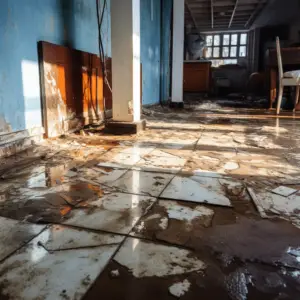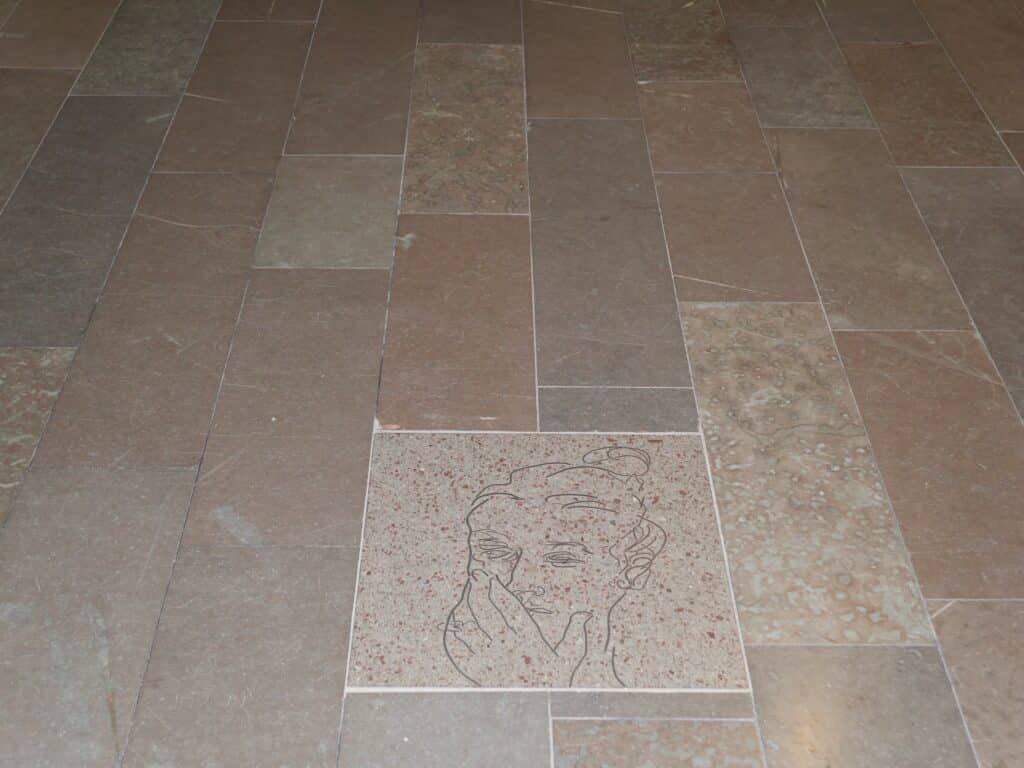If you’re planning on remodeling your old home, it’s important that you understand that asbestos is a potential hazard. In fact, studies show that asbestos exposure can cause a list of medical conditions. Unfortunately, you might accidentally remove old asbestos floor tiles.
Well, removing these tiles in the 1960s wasn’t a big deal, but times have changed. You need to make sure that the asbestos associated with old vinyl floor tiles does not spread away.
In most cases, old houses contain asbestos in old ceiling tiles, insulation, siding, joint compound, pipe cement, floor tiles, roof flashings, and shingles.
Table of Contents
What if You Accidentally Removed Asbestos Tiles?

In case you accidentally removed asbestos tiles, then the first thing you should do is to let the air out. Asbestos particles are lighter than air, meaning they can stay airborne for a long time. It is also recommended to take a small part of the tile and have it tested.
The test process is not expensive and you might even find out that it wasn’t even asbestos. That said, if you actually removed some asbestos tiles, you should consider hiring a license abatement expert for advice about the remaining asbestos dust. Still, you might want to mention this to your doctor during your next visit.
It’s good to mention that the best approach is to install a new layer of tiles on top, rather than removing these old asbestos tiles.
Risks of Accidentally Removing Asbestos Tiles
Asbestos tile removal tile poses a high risk of fiber release. That’s why it is always recommended to ensure proper protective measures before removing asbestos tiles. These tiles need to be removed properly or just yet add another layer instead of interfering with them.
If you’re planning on removing old tiles, be sure to have them tested for asbestos. You can do this by taking air samples after removing asbestos tiles. Consider hiring a contractor who has the proper protective equipment such as disposable gear, HEPA-approved respirators, and a vacuum.
You are discouraged to handle asbestos abatement on your property without the assistance of a professional who is certified to carry out the abatement work.
Not every remodeling contractor or handyman has the asbestos certification. So, check that the person you hire to help remove asbestos tiles from your home has completed a federal or state-approved asbestos safety course.
What to Do if Asbestos Floor Tiles Are Broken?
One thing to note about broken asbestos floor tiles is that asbestos dust is only a hazard when exposed to air. While Asbestos dust could be a real problem, it would be rare. It might involve someone actually making asbestos dust, for instance, with a mechanical tool such as a saw or drill.
Taking out a few broken asbestos floor tiles does not always present a health hazard. But, of course, if you are willing to have the air quality tested in your property for asbestos, you could- although in some cases it might not be necessary. That said, the best approach is to cover up asbestos tiles, so they don’t end up releasing toxic dust.
How to Cover Asbestos Tiles
There are various ways of covering asbestos, but you can easily do so with carpeting. In any case, avoid using a fiber pad to cover asbestos, especially in the basement. You might be better off with a rubber-based carpet pad.
Alternatively, you can simply tile directly over asbestos tiles. In that case, ceramic tiles are generally considered excellent for masking old problematic tiles. Try to choose floor-rated ceramic tiles, preferably those which are thin enough not to cause further trouble.
You can also use marble or granite flooring to cover asbestos tiles, provided you’re not doing this in a basement or another area susceptible to moisture. The most common approach is to use a thin epoxy set of mortar to keep the flooring thin enough to work on your property.
Note that although you can put vinyl flooring over asbestos tiles, this should only be done if the old tiles aren’t loose. Some even use peel and stick vinyl tiles because they don’t require an additional adhesive layer, making the floor excessively thick.
How to Clean Up Broken Asbestos Tiles

Again, asbestos abetment professionals should deal with broken asbestos, mainly because they are trained and have the much-needed equipment to handle such toxic materials and dust.
You use a hammer and putty knife to get rid of broken asbestos tiles. Use the putty knife to get under the edge of the tiles and poop it lose. You’ll realize that after removing the first asbestos tile, you will be able to use the knife at a 45-degree angle. Proceed and remove the remaining old tiles.
Be careful while doing this so you don’t end up breaking asbestos tiles in the process. You don’t want to expose hazardous asbestos to the air. A great way to reduce this risk is to wet the area you’re working on.
You might want to consult the local Environmental Protection Agency to learn more about the recommended practices when dealing with broken asbestos tiles.
The Bottom Line
To sum up, the world doesn’t come to an end simply because you ripped asbestos tiles by accident. That said, though, it is important to keep in mind the potential health hazard when dealing with such toxic materials. This is the main reason why you should always take the necessary measures, including having the air tested.
Besides, there are other means where old tiles can be repaired or isolated instead of getting rid of them completely. If the flooring is in proper condition, you can easily get it isolated from potential damage using sturdy airtight barriers. You can count on this as a temporary hack to some asbestos issues.
However, if you have accidentally broken asbestos tiles, the most recommended approach is to get the tiles tested. And if it turns out that the tiles are actually asbestos and toxic, the best course of action would be to get rid of the entire flooring where such tiles are present. This should only be done by a licensed abatement professional.


